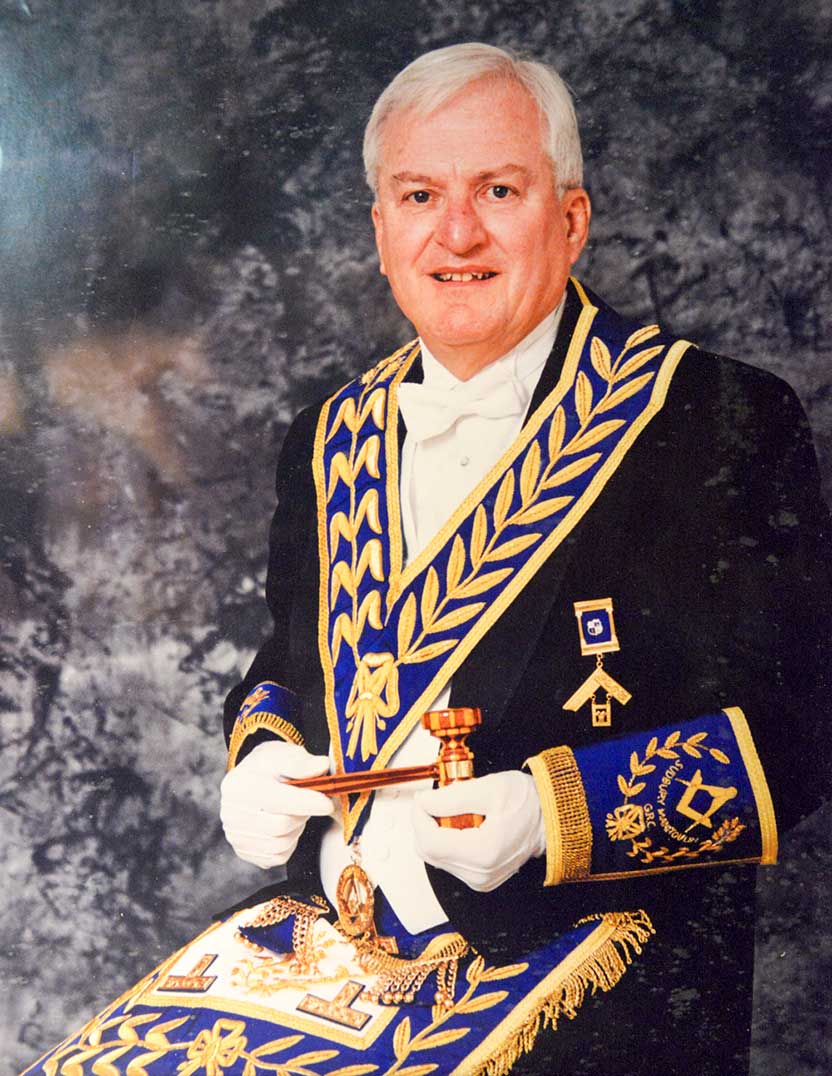By Petra Wall
John Hodder’s excellent organizational and negotiation skills have effectively enhanced the opportunities for our Manitoulin Island community. This talented visionary has accomplished so much, starting with his teaching years, through his time as principal of the Little Current Public School and also as mayor of this town. In this latter role, and as a councillor, he helped complete the revitalization of the downtown core, build the Rec Centre, added water and sewage infrastructure, initiated the construction of the Spider Bay Marina, and lobbied for a universal phone system for the Island that would see the end of most local long distance charges.
In the mid-1990s, John served as administrator of the Centennial Manor. He also became the District Deputy Grand Master, elevated to this position as the choice of all the Masonic Lodges in the area. As a board member for several associations, he boosted Manitoulin tourism and he did his part to take the Northern Ontario Medical School from concept to reality. His literary contributions have been as follows: Masonic Lodge ‘Our History: Doric Lodge 1902-2002’, ‘McLaren’s Bay: A Brief History’ and ‘The Voice of the North, Directives and Focus for the Federation of Northern Municipalities.’
“My mother, Joan Burdett, was British. Her ancestors, French Huguenots, had owned a successful publishing company but, unfortunately, legal issues used up most of the family resources. As a young lady, Joan fell in love with a Canadian soldier. Regimental Sergeant Major Cyrus Wilson Hodder, from Newfoundland, was serving with the Signal Corps of the First Division in Epson England in 1941.” Back in Newfoundland, Grandfather Hodder owned some land, a parcel of which he gave to the United Church. He allocated some more of his land for a cemetery and he left the rest to the family. Grandson Cyrus had left Newfoundland for work in Ontario.
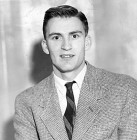
Joan Burdett became Cyrus’ war bride and John was born during an air raid on March 20, 1942 on British soil. “My mother was worried about the war, so she travelled to Scotland, thinking it might be a safer place. The V-rocket attacks in Britain had become rampant at the end of the war. After 10 days in Scotland, homesickness and loneliness brought her back home, which was near the Epson Derby, where the Queen’s racetrack is located.”
“I didn’t see much of my father when I was young because he was involved in campaigns in Italy, France and Germany. I did a lot on my own. I remember going to Beacon Hill to watch the Allied planes take off.”
Cyrus was released from the army in 1945 after a six-month stint guarding prisoners in Germany. He returned to Canada with his troops and then arranged for his wife and son to board the hospital ship, Letitia for her last run, in August of 1946. There were lots of other British war brides and kids on board, more children than adults, and many were sick during the voyage. “We were on C deck, beside the bottom hold. A big storm added more concern. Two days before the big ship landed, the water supply was running out and a destroyer had to be dispatched from Halifax to resupply the Letitia with water.”
After landing in Halifax and resting for two days, the young Hodder family travelled by train to Mattawa where the Red Cross picked them up. They took them to a hospital in North Bay where Cyrus was happily reunited with his family. They did some shopping which included a pair of long pants to replace the short English pants that John was wearing.
Then the family headed for Temiskaming where Cyrus had worked before the war started. He was a millwright for the Canadian International Paper Company. “On the way home, on the Old Forrest Road, we stopped to help some people stuck in the ditch. It was a real eye-opener for me. It was nothing like England. I found the rural Canadian north, and the tasks one did there, quite a transition from city life back home. I was enjoying the adventure. My mother thought we had arrived to the end of the world,” John recalls. “But in due course, she got used to life in Northern Ontario.”
The young lad’s first day of Grade 1 was a bit embarrassing. “My mother put me in those traditional shorts that English lads wore, but my heart sank when I realized all the other boys wore long pants. I was grateful that the very next day my father insisted I wear long pants. School was alright in Canada. I remember getting the strap in Grade 2. I had deliberately misspelled some words, knowing what would happen. Getting the strap was socially acceptable and a sign of toughness for the boys.”
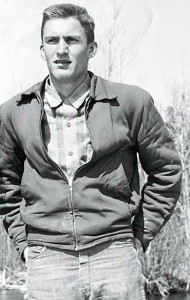
The family had three more children: David, Peter and Kathy. In 1947, Cyrus bought a camp at Lake Temiskaming. There was no indoor washroom, no running water and no hydro. “We grew up at the camp and we loved it. My father encouraged all three of his sons to build a boat when we got to Grade 8. My brother David built a sailboat, Peter in his time built a run-about and I built a sea-flea. My sister didn’t have to build anything.”
Kathy went on to become an Electrical Engineer and retired as a professor at Nipissing University in North Bay. Peter is a retired Millwright who lives in Thunder Bay. David has retired as an Electrical Planner and he lives in Thunder Bay too. John continued to live in Temiskaming until he finished Grade 11. Grades 12 and 13 were completed in Toronto where he boarded with his aunt and uncle. During his last year of high school, he and a friend joined the army cadets. After graduation, John attended Normal School in North Bay to prepare for his teaching career. In 1961, at 18, he graduated from Normal School (Teacher’s College) in North Bay. He was the second youngest teacher that year. John found work right away, in Little Current on Manitoulin Island.
John met Glenda Wilkin in 1962 at the Edgewater Restaurant. Her ancestors had originally owned land in Yorkshire, England, but they left there in 1865 and settled in Southern Ontario, eventually moving to Manitoulin. John saw Glenda again at a local teacher’s convention where her mum had donated some incredibly delicious cream puffs. After the new friends had finished the tasty treat, John asked Glenda to accompany him to the Edgewater for dinner. They courted for two years. John taught school while Glenda was working at the Bank of Montreal. They wed on August 17, 1964. “I came home from university on August the 16th and we were married the next day. Glenda and her family had done a great job getting everything ready.”
“We left for our honeymoon and stopped at a gas station where the attendant saw our ‘just married’ sign and gave us free gas. As we approached the bridge, someone mischievously swung it open so we couldn’t leave. The whistle sounded and the bridge swung back into place.”
The couple headed for Parry Sound the first night, then on to the Thousand Islands for a cruise. John teased Glenda by convincing her that Canada and the United States were separated by a blue line in the water. She innocently tried to find that line, both because she wasn’t sure if it was real and also to humour her new husband. She glanced at him and noticed his smile. There was no line. The newlyweds went on to visit the Parliament Buildings in Ottawa and finally they returned to Toronto.
“We found an apartment in Weston and unloaded all we had fit into our car: our clothes, our roll-over cot, a television, a trunk for a table and a television tray. Sometime later, we bought three rooms of furniture for $400 and moved closer to the Bala Avenue Public School, my next teaching assignment.”
In 1967 the couple moved to Mississauga where John taught Grade 7 and 8 at Lancaster Sr. School, an open-concept school. He worked there for six years, earning about $3,800 a year. “We took the Grade 7 and 8 classes to Expo ‘67 that year. The school board paid for the trip. About 240 kids and seven teachers filled three buses,” the retired instructor shares. “To settle them down after the daily touring, I told the kids a Windigo story. I had learned it at the Boy Scout camp in Temiskaming. The story was a little scary and that strategy worked like a charm. Everyone stayed put and went to sleep. They felt safe being close to each other: safety in numbers.”
The Hodders had two children, Kim and Lisa, born while they lived in Toronto. John knew Glenda wanted to move back to Manitoulin, so he was interested in a principal’s position he found advertised in the Globe and Mail. Glenda informed her mother, who contacted a local School Board member to notify them that John was looking for work locally. John was contacted by Nelson Ward, the Director of Education of the old Manitoulin Board of Education. A new resume was created and hand-delivered to the director. John got the job. The superintendents of the Mississauga education system were sorry to see him go.
In 1970, John became the principal at the public school which had also taken over the old high school building, both in Little Current. The family settled in a home in town. A public school was expanded to include a gym in 1974 and 450 kids was the enrollment at that time. The new high school had already opened in West Bay in 1969.
One more child, Jim, was added to the family team. Sadly, John lost his father at about this time. He was a young 61 when he succumbed to injuries he had sustained during the war. John’s mother lived to a ripe old age of 93. She had moved to Thunder Bay after her husband died and finally, at 90, she moved to North Bay to be near her daughter.
The Hodders spent their summers at the camp. Diapers were hung in trees. All family members, Kim, Lisa, and Jim recall this time in their lives as being special. John, however had to spend much of his summer taking classes in Ottawa or Kingston. “Glenda would pick me up across the lake every Friday evening and return me to that same spot on Sunday night so I could drive back to the university. She came regardless of the weather, but luckily it was not too windy or stormy when she had to make the trip.”
The family spent holidays travelling too, to both the east and the west coasts. “The kids were good travellers. If one of them got lost, they knew what to do. When Jim, four, was lost in a store in Thunder Bay he was savvy enough to approach a clerk at the front and announce his father’s name so he could be paged. The next time Jim was lost, it was two years later, in Disneyland. He returned to the main gate and informed the security guard. Again John was paged and he retrieved his son at the main gate.
Daughter Lisa was more likely to bring home lost animals, usually cats. She found them wandering around the school grounds. They often wound up at the neighbour’s homes, at least temporarily until their owners could be found. Family would visit. “My brother Peter came at Christmas and he would don a Santa suit so he could visit families in the neighbourhood and impress them with his ‘Ho Ho Ho’ as he moved from house to house.”
John earned graduate degrees from both Queens University in Kingston and the University of Ottawa. He majored in English and Geography and got his Masters in Administration. He continued as principal with an enhanced designation, and in 1986 he also became mayor of Little Current after having been on council previously from 1976 to 1982.
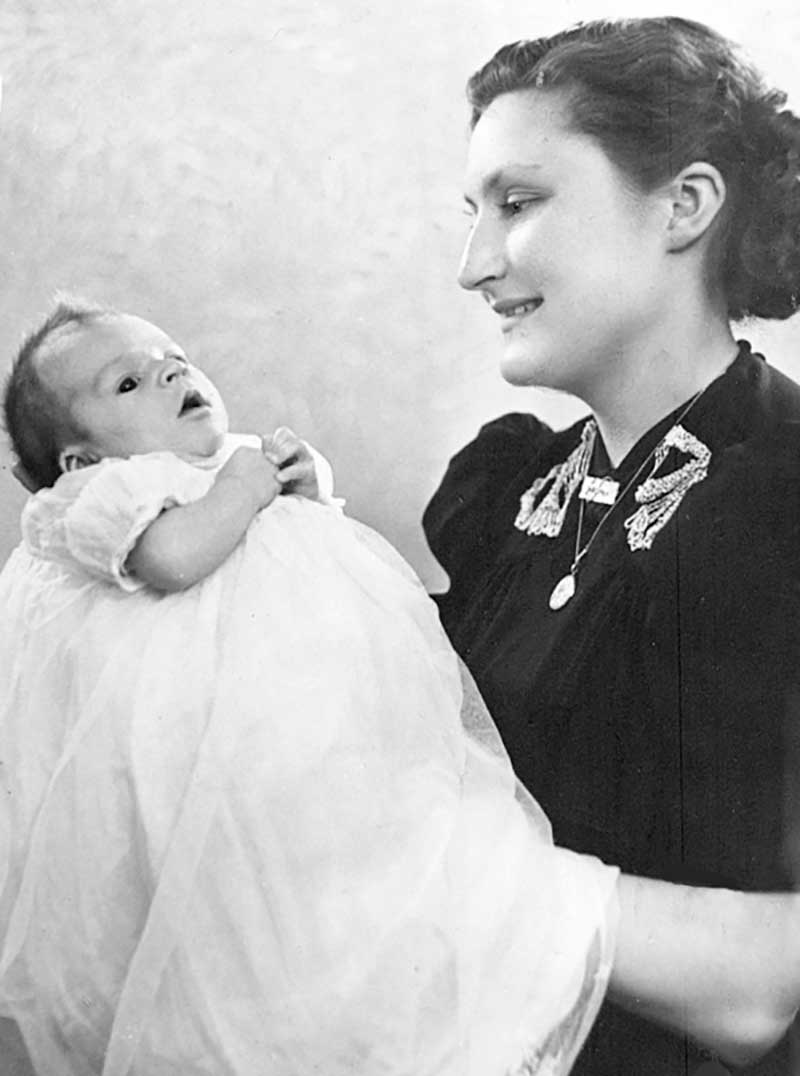
During his council years, John helped build the recreation centre, oversaw the sewer and water installation in town, began recycling, helped revitalize the downtown by removing hydro lines and he helped with the inception of Spider Bay Marina. The Island also saw the centralization of the telephone system during this time. That meant the much-welcomed end to long distance charges on Manitoulin. The Information Centre and the acquisition of the post office building were completed during his tenure as mayor.
John retired from his academic career in 1996 at age 54. He became the administrator at the Centennial Manor that year and he also joined the Northern Ontario Heritage Fund Board. In 1998, John left the Manor to deal with a bout of skin cancer. “In addition to the health issues, I wasn’t as happy working with people in the twilight of their lives as I had been working with young students, setting out on their life’s journey.”
Other boards that benefited from Mr. Hodder’s expertise were the Owen Sound Transportation Company, and the North Channel Marine and Tourism Council. John helped grow tourism for local marinas, including Killarney, Gore Bay, Spanish, Thessalon and Spider Bay.
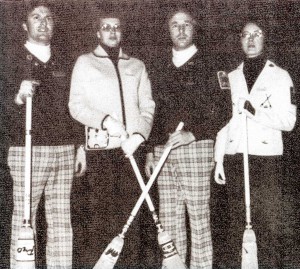
An Expositor article written at the time tells us the Tall Ships made a visit on August 10, 1994, as part of the Haweater festivities, raising money for the town with ticket sales for tours. The Half Moon was the biggest attraction. It was a replica of Henry Hudson’s ship that sailed in the early 1600s and it included early navigational equipment, six sails, three masts, sea chests, weapons and tools.
John became the president of the Federation of Northern Ontario Municipalities for a year. This area stretched from North Bay and Timmins to Sault Ste. Marie and included Manitoulin Island. During his time as president, the association hosted a big convention at the rec centre in Little Current.
John spent a lot of time writing policies and procedures for various projects his associations took on. He became a spokesperson for Cold Water Fisheries. An Expositor article on February 18, 1998 describes the development of a process that utilized all of the trout. Tasty trout burgers were created. Entrails were sent off for pet food.
Mr. Hodder wanted to participate in the initiative that would see more doctors in the north. He began to work as a social convener in Sudbury to help get the medical school for the north on the rails. “The southern universities would not give up their seats so new ones had to be created for this medical school slated for Sudbury and Thunder Bay.” John was deeply involved with the creation of policies to regulate the new facility.
John was also a busy family man, curling with Glenda, bowling and attending hockey games for the boys. Today, John sits on the LAMBAC board and he is a representative for the Manitoulin and surrounding area on Sudbury’s Crime Stoppers board. He is secretary of the Masonic Lodge in Little Current and a member of NOCA, the Northern Ontario Curling Association. “We curl four times a week here and we participate in the Provincial Curling bonspiels. In 1976, Glenda and I came real close to being in the Canadian finals with Roy and Margaret Eaton.”
The couple’s three children have done well. Kim became a bank manager at RBC in Espanola. Husband Joe Cooper is a manager of electrical work at Domtar. Their son Scott is a chemical engineer. Their daughter Katie is opening her own day care centre and Jackie is still in Grade 11 at Manitoulin Secondary School.
Daughter Lisa is a librarian in Coniston and her partner David Burnett works for the local post office delivery department. Their children are Kayla who works in day care in Sudbury, Andrew, a heavy-duty mechanic in Huntsville, and Lora, in her second year at university, on her way to being a lawyer. Lastly, Jim works in Toronto for Maynard Liquidators, a company that deals with closing out businesses. He has two children, Jayden in Grade 8 and Morgan in Grade 3.
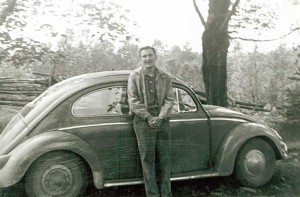
“I really have no regrets. My life has been good so far. If I could go back in time, I might have worked more extensively to bring ferry service from Alpena, Michigan to South Baymouth, but the Nindawayma, the boat we were hoping to use, was sold. My recipe for success? Keeping busy and learning from both your triumphs and your failures.”
John also learned the art of woodworking and he built a bunk house at the camp, without the help of electrical tools. Glenda is a ‘Red Hatter’ and is a member of the choir at the United Church. The Ladies’ Legion Auxiliary is another interest of hers.

John is in good health. He suffered two strokes, one eight years ago and another two years ago, but there is no trace of either now. “When each grandchild finishes Grade 8, I take them to Newfoundland to see the land of their grandfather. I took Lora and Jackie together.” He also helps out his children and grandchildren with requests from time to time.
John’s strengths are multi-tasking, being organized, fundraising and, most of all, acting on visions. Manitoulin is a special place for John and his bride Glenda. “When I retired from my principal’s job, I was asked where I wanted to move to,” John offers. “I asked, why should I move? I have been here for 20 years. I know everyone here. Most people are very friendly and if they aren’t we can always swing the bridge and keep them out,” he concedes with a smile. We have scenery that can upstage any other location. We have hills, water, lots of trees and a low crime rate. Really, there is nothing else to ask for. Manitoulin is where it’s at.”

